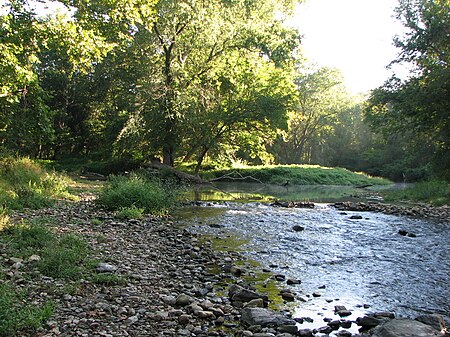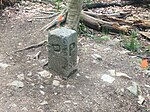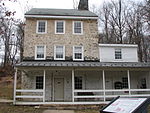White Clay Creek Preserve

White Clay Creek Preserve is a 3,050-acre (1,230 ha) Pennsylvania state park along the valley of White Clay Creek in London Britain Township in Chester County, Pennsylvania in the United States. The park was donated by the DuPont Company in 1984 for the purpose of "preserving the diverse and unique plant and animal species, and the rich cultural heritage of the area". Dupont also donated an additional 528 acres (214 ha) for the adjoining White Clay Creek State Park to the state of Delaware. White Clay Creek Preserve is 3 miles (4.8 km) north of Newark, Delaware on Pennsylvania Route 896. The preserve is supported by the Friends of White Clay Creek Preserve.
Excerpt from the Wikipedia article White Clay Creek Preserve (License: CC BY-SA 3.0, Authors, Images).White Clay Creek Preserve
Indiantown Road, London Britain Township
Geographical coordinates (GPS) Address Nearby Places Show on map
Geographical coordinates (GPS)
| Latitude | Longitude |
|---|---|
| N 39.743055555556 ° | E -75.789166666667 ° |
Address
Indiantown Road
Indiantown Road
19350 London Britain Township
Pennsylvania, United States
Open on Google Maps









